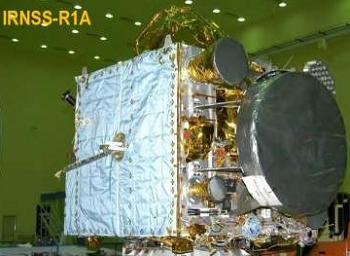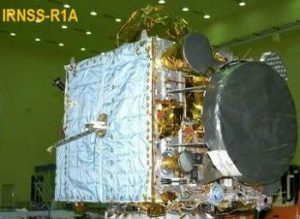The atomic clocks on the first satellite IRNSS-1A of the NAVIC, an indigenously built satellite system has developed technical complications.The Indian Space Research Organisation (ISRO) Chairman, A.S. Kiran Kumar informed that one of the three crucial rubidium clock on IRNSS-1A spacecraft failed six months ago while the other two failed subsequently.
- NAVIC is a constellation of seven satellites in the geosynchronous orbit and two backup satellites on ground. Each satellite consists of three atomic clocks. Thus there are total of 27 atomic clock in NAVIC.
- ISRO Chairman also announced that the default satellite would be replaced by one of the back-up satellite 1H, in the second half of the year 2017.
- The Chairman also clarified that the rest of the satellite were functioning well in terms of performing its core function of providing accurate position, navigation and time.
- As per the information by A.S Kiran Kumar, minimum four working satellites were sufficient for proper functioning of the navigation system.
About NAVIC
NAVIC (Navigation with Indian Constellation) also known as the Indian Regional Navigation Satellite System (IRNSS) is an autonomous regional satellite navigation system built by India to provide accurate real-time positioning and timing services over India and the region extending to 1,500 kilometres around India.
- The NAVIC system will consist of a constellation of 3 satellites in Geostationary orbit (GEO), 4 satellites in Geosynchronous orbit (GSO) and two satellites on the ground as stand-by.
- The seven constellations of satellites include: IRNSS-1A, IRNSS-1B, IRNSS-1C, IRNSS-1D, IRNSS-1E, IRNSS-1F and IRNSS-1G.
- These satellites were developed to give precise information on position, navigation and time (PNT) of objects or persons to users on ground, sea and air.
About IRNSS-1A
 IRNSS-1A is the first navigational satellite of the Indian Regional Navigation Satellite System (IRNSS) series of satellites. The satellite was launched on 1 July 2013 at a coat of USD 19 million.
IRNSS-1A is the first navigational satellite of the Indian Regional Navigation Satellite System (IRNSS) series of satellites. The satellite was launched on 1 July 2013 at a coat of USD 19 million.- It provides data similar to Global Positioning System (GPS) used by United States, however, it has been launched only for India and the region around it.
About Atomic Clock
An atomic clock is an extremely accurate clock device that uses vibrations of an atomic or molecular system such as cesium or ammonia for its timekeeping element.
- Atomic clocks are the most accurate time and frequency standards known, and are used as primary standards for international time distribution services, to control the wave frequency of television broadcasts, and in global navigation satellite systems such as GPS.



 IRNSS-1A is the first navigational satellite of the Indian Regional Navigation Satellite System (IRNSS) series of satellites. The satellite was launched on 1 July 2013 at a coat of USD 19 million.
IRNSS-1A is the first navigational satellite of the Indian Regional Navigation Satellite System (IRNSS) series of satellites. The satellite was launched on 1 July 2013 at a coat of USD 19 million.

